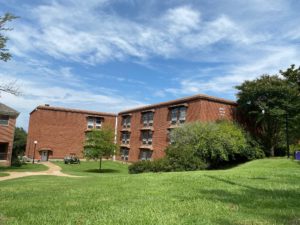by Alex Melnick
contributor
Ma’alob[1] Millsaps! As the months turn to winter (psych, it’s still very hot in Mexico) my thoughts have turned to the people and the places that I used to celebrate the holidays with, but no longer can due to their moving from my earthly plane of being. Thus, it was serendipitous that Erin Crosby asked me to write about Day of the Dead. Except, the thing is… I can’t. Sorry to disappoint, guys.
I’m writing about Hanal Pixan instead, because estoy en Yucatan, la patria de las Mayas. In the Yucatan, the Maya people celebrate Hanal Pixan, which is similar but crucially different than Dia de Los Muertos. Hanal Pixan in Maya roughly means “food of the souls.” This feeding of your and loved one’s souls through mutual remembrance of deceased friends and families takes places from Oct. 31s to Nov. 2, and features ample feasting, public shrines and a mass walking exodus to the Merida (the capitol city of the Yucatan) graveyard. Every day in every town I was in, I saw families creating shrines to lost ones, families enjoying a meal at these shrines, and most importantly, families living and loving at these shrines and sharing this living love with the images and effigies of those had left them behind. Death is not a thing to be scared of in the Yucatan. Perhaps it’s because when you die, you are granted three days during Hanal Pixan to visit the earth.
The striking thing about Hanal Pixan is how the celebrations are the same whether they’re pueblo- or big city-based. The shrines in the small pueblo of Oxkutzcab (where I currently reside) were as vibrant and carefully kept as the shrines and light that dotted the Merida processional pathways. Townspeople wander the avenues, often with several children in hand, and sample sweets, tamales and arroz con leche made by their neighbors. At the risk of sounding crass: It’s like metaphysical memorial tail-gating. The tradition of Hanal Pixan holds that the dead really are walking the earth on these nights, and I imagine that any soul that visits Merida or Oxkutzcab would find their visit exceedingly pleasant. I felt a certain kind of peace in Merida, standing in street as a ribald, jostling parade of people rushed by. This parade of skull-painted processional people starts in Merida’s Centro and somehow, someway, after hours ambles to and winds down at Merida’s massive historic graveyard. Then the dancing and talking and visit-paying begins. The dark crowded tombstones reminded me of teeth; a mouth of a skull. Every tombstone was a big tooth of a day, an hour in the history of human life. And oh, how the teeth smiled. In that graveyard, I thought about the ones I’ve lost and was struck by how much they’d get a kick out of me standing in Mexico, dreaming of them.
[1] Ma’alob is a Maya greeting that roughly means “How is your road?”
